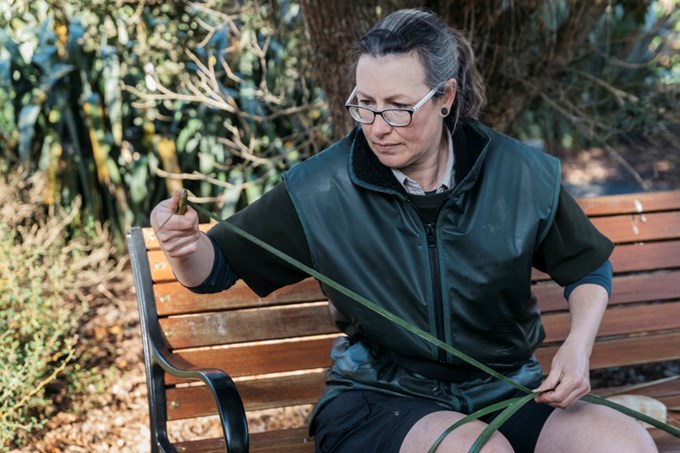From what plant can you make kākahu (garments), kete (kits), taura (rope) and whāriki (matting)?
Harakeke (flax) of course!
Kerry Gillbanks, our very own weaving wāhine, has been the harakeke collection curator at the Auckland Botanic Gardens for over a decade.
“Harakeke is a valuable and precious resource that can be used for so many different things depending on its characteristics,” she says.
“There are around 48 named varieties of harakeke in the collection at the Auckland Botanic Gardens. My role is about ensuring the plants retain true to the traditional form and are available for weavers to use for raranga and whatu (weaving).
The weaving properties of harakeke are one of the reasons Kerry is so passionate about the conservation of the plant.
“My interest in this special plant grew when I was introduced to the weaving practices of harakeke, it’s different uses and the stories and experiences of other weavers.
"I was encouraged to complete a Bachelor of Māori Visual Arts majoring in Weaving at Te Wānanga o Aotearoa, which is where I started my weaving journey.”
Maintaining a true collection
Dividing and replanting harakeke is a way to ensure we retain our true weaving varieties.
“This involves lifting the plant, removing the outer leaves and replanting following tikanga practices.
“Harvesting the leaves helps with encouraging new growth and having clean material for weaving.”
Traditionally, Māori see the fan-shaped harakeke as a whānau. The precious rito, or inner shoot, is like a child and must never be removed. The awhi rito, which stand on each side of the rito, are the mātua or parents and are also never harvested.
Other tikanga practices for harvesting harakeke include:
- saying a karakia (prayer) prior to harvesting
- not eating, drinking or standing on or over the plant
- harvesting in fine weather.
“Anyone can harvest our harakeke here at the Auckland Botanic Gardens. Newcomers to the collection can get in touch with me via the Huakaiwaka, visitor centre,” says Kerry.
Harakeke Collection
The Harakeke Collection at the Auckland Botanic Gardens started in 1989 with the donation of 23 weaving cultivars by the late Mr Buckley Fyers of Tuakau. It was expanded in 1996 with additional plants received from the Rene Orchiston National New Zealand Flax Collection at Landcare Research in Havelock North.
Visit the Harakeke Collection today and discover some of the beautiful stories of our harakeke.
If you’re interested in working for our environmental teams, there are some positions available. Head to our Auckland Council careers site to find out more.


